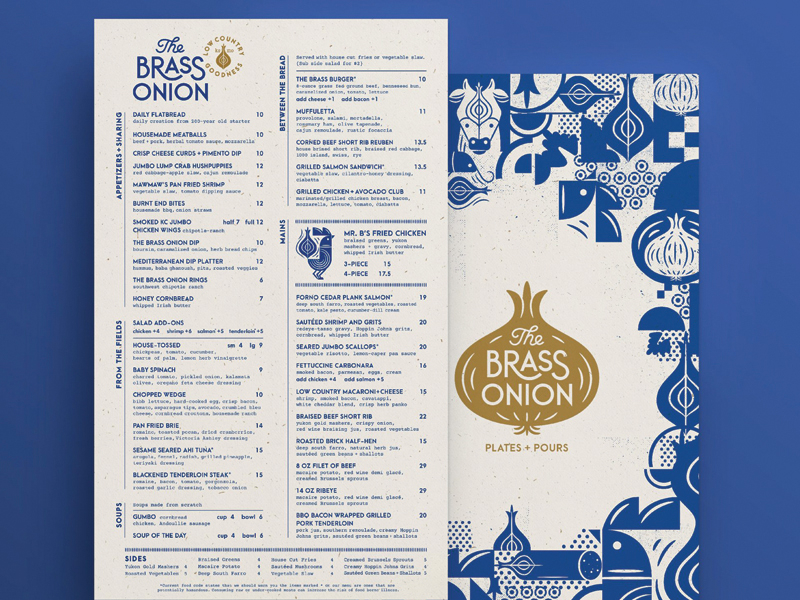Before we develop a restaurant franchise, we must conduct a brand analysis, which we will scale up. We identify the potential of the brand, the benefits for development, as well as identify weaknesses that may become a threat or constraint in the future.
In this article, I would like to list the main components of the brand in catering. For beginners, this will help to get basic information in restaurant branding, and an experienced restaurateur will be convinced that he is doing everything right and all these elements are designed correctly.
Restaurant brand = identity + product + service / established processes
Outline
- What is restaurant branding?
- Get Bakery Website Design
- Get Restaurant Website
- Let Us Build an Industry Leading Media for You
- What makes up branding?
- How can I apply a brand to my restaurant?
- Why should my restaurant have a brand?
- Restaurant Brand Identity
- Product (menu)
- Service
- What are some examples of restaurant branding?
- To sum it up on restaurant branding
What is restaurant branding?
Branding tells your customers who you are – and what exactly you can do for them. Not only does it create a corporate personality, but it also sets your restaurant apart from its competitors. The stronger your brand, the more it extends across the entire business, from internal designs to marketing materials.
For a real-life example – close your eyes and picture Starbucks. Like a million other people on the planet, your mind goes directly to the inviting ambiance, the coffee smell, and the mermaid logo that can be found every couple of blocks of all major American cities.
Branding is powerful. It can make or break your restaurant.
What makes up branding?
Branding consists of four chief parts – the core idea, the public brand promise, marketing, and advertising. Exterior and lesser elements include logos, colors, fonts, and image styles.
The core idea – what will your restaurant stand for? What will it stand against? Will it be ethnic food? Fast food? Other?
The public brand promise – what do you promise your customers? What will you use to market your restaurant to potential customers?
How can I apply a brand to my restaurant?
If you wait until your restaurant is open, it’s probably already too late. The branding for your restaurant needs to begin all the way back in the beginning stages of thinking about starting a restaurant. The brand will affect everything with which your client interacts – from the ambience of the restaurant to the color of the menus and the way the food is presented.
Start at the drawing table, and make a plan.
Why should my restaurant have a brand?
Your restaurant’s brand encompasses its identity. Not only does it clarify your customers’ expectations, but it also sets you apart from your competition, communicates your message, and sets your restaurant up for success by achieving memorability. Your brand is what will make your customers remember you. Your brand is what will bring them back. Your brand will set you apart from every other restaurant out there and guarantee success.
Restaurant Brand Identity
It is the image of your place. Everything that the guest visually associates with your restaurant. In turn, the identity includes several essential elements.
Restaurant name
Anyone who owns a restaurant is very jealous of its name. The name is chosen for a very long time, is nurtured and then almost never changes.
Restaurant logo
Visual display of the brand, ideas, atmosphere of the place. Guests of the facility should take a look at the logo and make a conclusion and a choice in advance. “Whether it’s expensive or not. “Democratic or exquisite”, “Fashionable or casual”, etc.
Signboard
This item follows directly from the previous paragraph because the signage is usually the logo. At the same time, it is very important what materials are used and in what style the signboard of the restaurant is made. Looking at the signboard, the guest makes the final decision – to go inside or pass by.
Restaurant’s room and interior
It’s the physical, real shell of your institution’s brand. Which chairs will the guests sit on, which walls will be around them, which floor and ceiling coverings will surround your guests? This directly affects the perception of your brand by the audience.
Staff uniform
The way your restaurant’s team is dressed is also influenced by the audience’s perception of the brand.
Naturally, guests come for food at the first place. The perception of your brand by guests depends on what you serve and how you serve it. I will dwell on the main categories of dishes, which are necessarily present in the menu of each restaurant.
Classic brand
Positions that are invariably present at any point in the network. This is a set of specialties, without which it is difficult to imagine your institution.
Not found in all points, only in the advanced menu option. Sometimes, for example, some menu items may be too expensive for a small city and it is decided to leave these items only in the capital objects. However, removing these items from the menu will not harm the brand.
Additional positions
Positions that complement the classics and work to increase the average check: drinks, potatoes, side dishes. They cannot be called your brand positions, but the audience expects to see these positions on your menu. For example, it is difficult to consider French fries as a specialty, but if you sell burgers, guests expect to see the potatoes on the side.
Seasonal positions
the positions that are entered for a certain season. For example lemonade in summer, mulled wine or punch in winter, etc.
Regional positions
Positions that you introduce to please regional and cultural particularities. Example: Enter halal positions on the menu in a Muslim country.
Promotional positions
Limited offers at competitive prices. Limitations and benefits can vary greatly and have different objectives. For example: increase the average check, introduce the audience to a new dish, sell more marginal positions. Some promotions sometimes become very recognizable, are remembered by the audience and enhance the brand perception of your cafe.
For example breakfast at McDonald’s.
Service
The way of service in your restaurant illustrates the positioning of your brand. It’s strange if you can order food in a car in a luxury restaurant from the courtyard or vice versa when you come to KFC, we don’t expect a waiter wearing white gloves.
Usually, the following services are used in a restaurant:
- Self-service – the order is made at the cash desk. Cleaning is mostly done by the guests themselves.
- Service by waiters – the order is accepted by the waiter, tables are cleaned.
- For take-away – the order is made in the facility but is used outside it.
- Service in a car – a format “drive-thru”, which is not soundproof for the Russian ear, when the order is made from the car is very popular in our country.
- Delivery – the client orders food in your restaurant by phone, on the website or through an application, and your couriers deliver.
Established processes
The vulnerable part of the brand of most restaurants. What is written in the brand book is implemented in life through the processes used by the restaurant team in their daily work. The task of the restaurateur is to convey the importance of standards and processes, to provide training to employees and subsequent strict control of all standards.
What are some examples of restaurant branding?
Are you unsure of what your restaurant’s brand should be? Are you looking for inspiration on how to improve your current brand to attract more customers?
Consider the following example of restaurant branding:
What is your restaurant’s perfect brand? How will you use the four core elements of a brand to draw your customers in – and bring them back for a second visit?
To sum it up on restaurant branding
The restaurant’s brand, its perception by the audience, is built from many trifles. This article lists the main elements that together make up the brand of a catering establishment.
The idea of your brand should be read in each of the elements. After all, guests want to eat “the same pizza” & “the same burger” and for this, they are willing to overpay.

